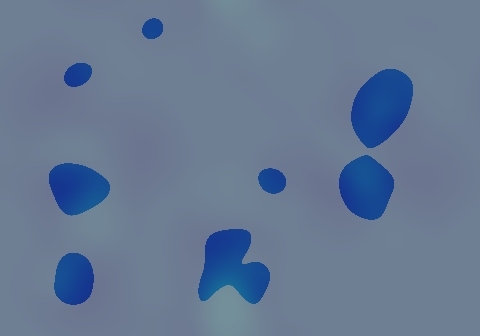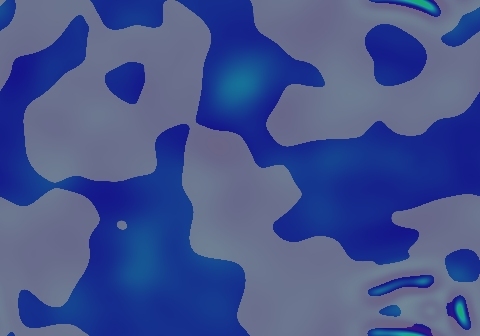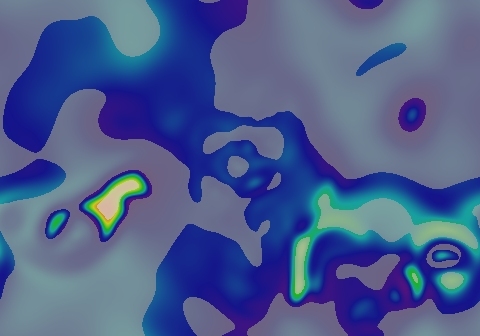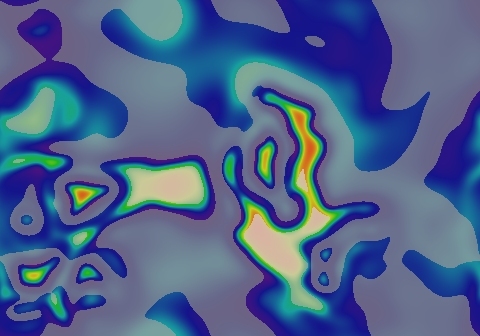Gray-Scott Model at F 0.0260, k 0.0510
These images and movie demonstrate the behavior of the Gray-Scott reaction-diffusion system with σ=Du/Dv=2 and parameters F=0.0260, k=0.0510.
Field quickly fills with blue but remains active. Distribution of irregularities in initial pattern recurs 960 tu later, then voids appear in any places that did not originally have voids. System alternates between a fairly uniform blue makeup and red/yellow/blue chaos, with a period of 1400 tu, through 2 or 3 cycles. After that, different areas of the field fall out of sync with each other. The occurance of voids continues without a global periodicity.
Categories: Pearson β; Wolfram 3 (glossary of terms)
 increase F increase F
 | |||
 decrease k  |


|
15 frames/sec.; each fr. is 40 iter. steps = 20 tu; 1800 fr. total (36,000 tu) |  increase k 
|

|


| ||
 decrease F decrease F
 |
In these images:
- Color indicates level of u, ranging from purple (lowest u values) through blue, aqua, green, yellow and pink/red (highest u values)
- Areas where u is increasing are lightened to a light pastel tone; where u is decreasing the color is vivid.
- In areas where u is changing by less than ±3×10-6 per tu, an intermediate pastel color is seen. This includes areas that are in steady state or equilibrium.
''tu'' is the dimensionless unit of time, and ''lu'' the dimensionless unit of length, implicit in the equations that define the reaction-diffusion model. The grids for these simulations use Δx=1/143 lu and Δt=1/2 tu; the system is 3.2 lu wide. The simulation meets itself at the edges (periodic boundary condition); all images tile seamlessly if used as wallpaper.
Go back to Gray-Scott pattern index
This page was written in the "embarrassingly readable" markup language RHTF, and was last updated on 2015 Nov 07.
 s.27
s.27